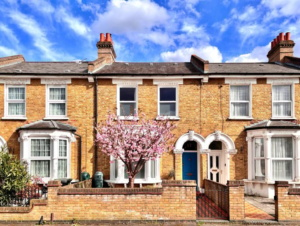House prices hit new record high
Key takeaways: April 2025 House Prices
- House prices: the average asking price of home hits a new record, at just over £377,000
- Number of homes for sale at this time of year is at a decade-high
- Snapshot of the housing market after stamp duty increase suggests people are carrying on with their home moves
- New home-buyer demand is up 5% compared to last year, with new sellers coming to market up by 4%
- Mortgage rates may drop more quickly than anticipated if the Bank of England reduces the Base Rate in May
As the weather warms up, the housing market tends to get busier, with more home-movers springing into action. This year, we’ve seen some bigger changes in the market than usual, with the temporary stamp duty holiday ending from the start of April. But our latest snapshot of the housing market shows that most people are continuing to proceed with their home-moving plans.
In fact, this month, the average price of a property coming to market has risen by 1.4% (+£5,312), reaching a new record of £377,182.
UK House Prices: April 2025
| Month | Avg. asking price | Monthly change | Annual change |
|---|---|---|---|
| April 2025 | £377,182 | +1.4% | +1.3% |
| March 2025 | £371,870 | +1.1% | +1.0% |
You can check the average prices in every region by viewing our House Price Index report for April and also the latest sold prices in your area here.
Why have house prices risen this month?
We tend to see bigger, seasonal house price increases in the Spring, when the housing market is busy. However, this month’s jump is bigger than the usual price rise we see in April.
This is because demand from those looking to buy a home is up by 5% compared to this time last year, while the number of new sellers coming to market has also increased by 4%.
Our property expert, Colleen Babcock says: “We’ve seen our first price record in nearly a year, despite the number of homes for sale being at a decade-high. The increased choice seems to be bringing more home-movers into the market, with both buyer demand and seller numbers up.”
With more homes available for sale than at this time last year, there’s more competition, so it’s really important if you’re thinking of selling your home to work with your local estate agent to get the pricing right.
Colleen says: “The high number of homes available in the market right now means that buyers are likely to have plenty in their area to choose from, and an overpriced home will stick out for the wrong reasons. Our research also shows that getting the price right the first time is key. Homes that don’t need a reduction in price are more likely to find a buyer, and to find that buyer in less than half the time.”
Alex Caddy, Manager at Clarkes Estate and Letting Agency in Dorset, adds: “Things are moving well when priced appropriately, and particularly popular homes can even go for above asking price. Those who may not be in a rush are testing the market with higher asking prices. In those cases viewing requests are far lower, indicating buyers are still price sensitive.”
The stamp duty increases aren’t slowing home-movers down
Since the April stamp duty changes, we haven’t seen an increase in the number of home sales falling through, which indicates there hasn’t been any major backtracking from first-time buyers and movers who were unable to complete before the tax rise. There was also a late rush to complete sales from those who did have their sales agreed in time to beat the stamp duty deadline.
The queue of buyers waiting to complete their home purchases shrunk by 24,000, or 4%, which was the first time this backlog dropped during the month of March since the pandemic in 2020, although it has now started to tick up again.
Some regions are seeing stronger home-buyer demand than others
While the traditionally busy Spring selling season has had a strong start, some regions across Great Britain have been performing more strongly than others.
Most Midlands and Northern regions, as well as Wales and Scotland, are seeing increases in buyer demand above the national average, compared to last year, and these areas have all seen new asking price records this month. By contrast, the higher-priced South West and South East regions are seeing smaller increases in buyer demand and prices.
Phill Sandbach, Director at John German in the Midlands, explains: “March was a very busy month, with more completions than in the post-pandemic stamp duty holiday. Solicitors worked really hard to get so many movers through. April has started off as a busy month for us, with market appraisal requests, viewings and offers across all of our East and West Midlands offices.”
London is the exception to the North-South divide. Despite being the only region with fewer buyers enquiring than at this time a year ago, average asking prices have also reached a new record this month. However, this may be short-lived. With London typically being more exposed to the impacts of geopolitical tensions, as well as currently seeing weaker buyer demand levels, we may see this price trend fall back.
While it’s too early to tell what impact this may have for the housing market, we could see mortgage rates drop more quickly.
What’s happening with mortgage rates?
Average mortgage rates remain just below 5%, with the current average five-year fixed mortgage rate of 4.72% being only slightly lower than this time last year. If the Bank of England opts for further and faster rate cuts, starting in May, then mortgage rates could drop more quickly than anticipated. You can check the current average mortgage rates here.
Colleen says: “It’s difficult to predict what the next few months will bring, but if mortgage rates reduce more quickly, it would be a helpful boost to buyer affordability.”
READ MORE: Our 2025 house price forecast
The header of image of this article is provided by Hill Clements, Guildford


